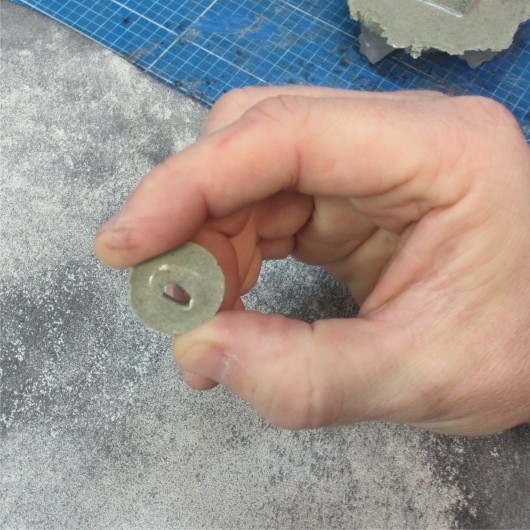
Many of the resin castings we produce are made in open-faced moulds which can leave a meniscus or a convex undersurface. This is easily dealt with by use of a heavy grit (80 or 120) wet-and-dry paper. Resin dust is toxic and so all sanding should be done whilst wearing a dust mask and in a well-ventilated area. Even better, use water to wet down the sanding area and casting as this will almost eliminate airborne dust; we have omitted water in these photographs for ease of viewing. Any water/dust residue can be easily cleaned off - see Resin Paint Prep tutorial.